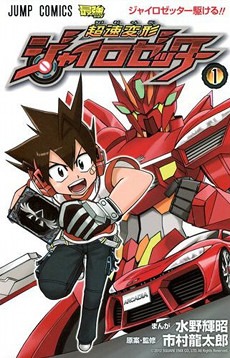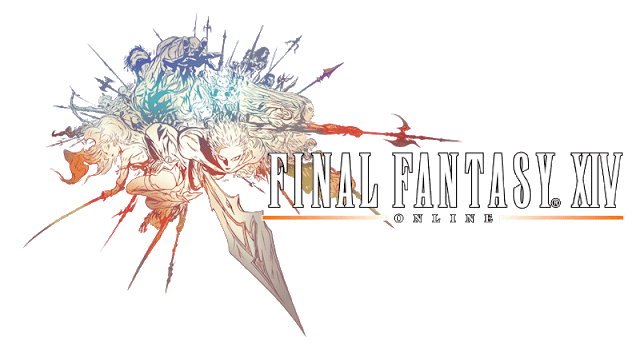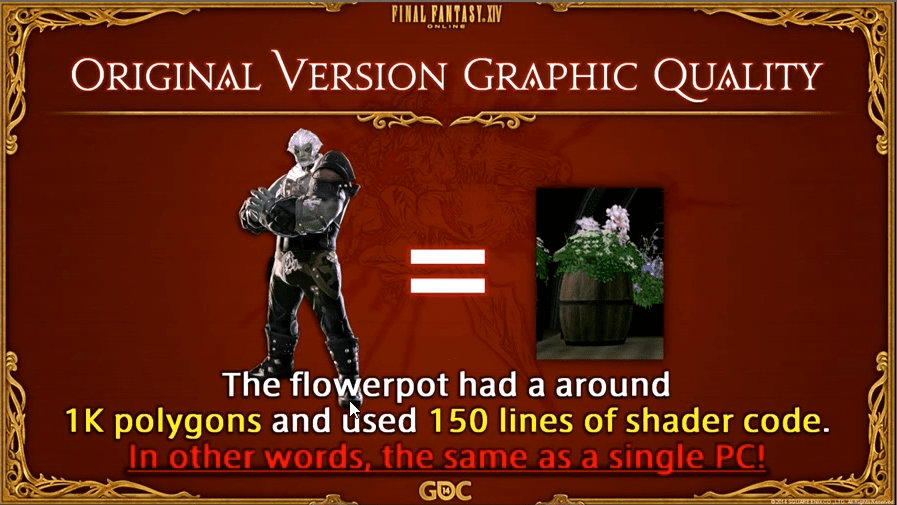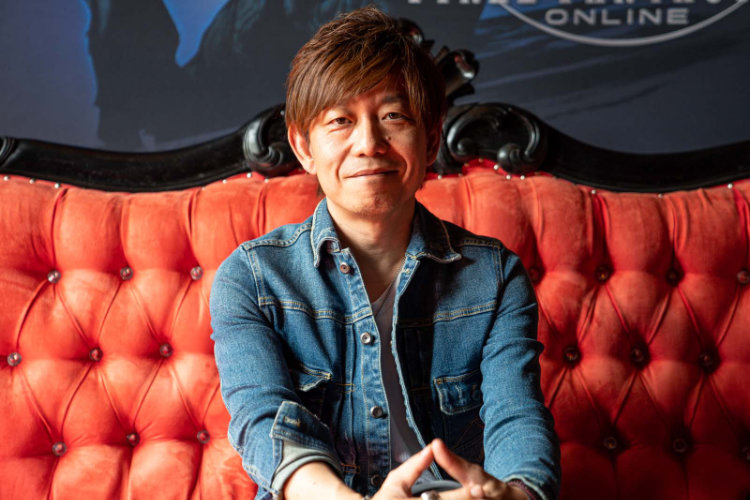Introduction
With the catastrophically bad launch of Final Fantasy XIV 1.0, Square Enix changed producers of the development team to try to recoup and save one of their most important game series. Naoki Yoshida, a relatively unknown producer at the time, with a lot of passion for MMORPGs, stepped in and made the proposal to remake the whole game in a record time while maintaining FFXIV 1.0 running for the lasting players. Below we’ll find out more about the what, the who and the how!
Who is Naoki Yoshida?
It all started when Naoki Yoshida, also known as Yoshi-P, was in 2nd grade when a friend invited him over to try out a new way of playing. This was how he got introduced to the world of videogames with the NES and Mario Bros. This was a revelation for him, being able to control something on the screen. However, what caught his attention the most, was how the gameplay changed when playing together. (Archipel, 2020)
Yoshida started his game development career at Hudson Soft, currently a subsidiary of Konami Digital Entertainment (Gamespot, 2011), where he worked on Bomberman and on various other projects which people didn’t want to work on anymore. “For example, I would take on Broken Projects or projects with tight deadlines. I would volunteer to take on projects that others wouldn’t want”. (Archipel, 2020)
He left the company amidst a disagreement of ideologies between him and his superior on the games being made. For a while, Yoshida worked with various smaller studios, including Enix (before the merger with Square). After a while, he got offered to work on Dragon Quest Online, later to be known as Dragon Quest X, marking the start of Naoki Yoshida’s career at Square Enix. (Archipel, 2020)
After Dragon Quest Online achieved Internal Alpha status, Naoki Yoshida was asked to step away from its development and work on a proposal for two completely new titles. One of these got developed further into what is now called “Chōsoku Henkei Gyrozetter”, a card game made for arcades and 3DS which involved cars and robot fights. The other game was a hardcore action game targeted at the western markets, as a mixture of Bloodborne and Evolve.

A couple of Yoshida’s team members who were working on the proposals got requested to help investigate the state of Final Fantasy XIV. As this wasn’t a direct change to another development team, but rather a task force to research the state of the game, they continued talking to Yoshida almost daily on the issues regarding the game. As such, Yoshida indirectly helped to research and to brainstorm on ways to fix the game from a director and MMORPG player’s perspective after work hours.
This all changed when the higher-ups called upon Yoshida’s perspective on the issues. At first, he would only take over the role of Director, however, they weren’t sure on whom to be the new producer. As such, Hiroshi Takai, Assistant Director of FFXIV: A Realm Reborn, and Yoshihisa Hashimoto, former technical director on Final Fantasy XIV: A Realm Reborn, during a discussion a day before announcing the changes in leadership to the development team, suggested for Noaki Yoshida to take that position, as they thought that he got what was needed to fix the game, even if the producer’s position would mean a lot more work.
The reason Takai suggested was “What we need right now isn’t a producer. Yoshida-san has been making all of the decisions for the past two months. He’s the one who gave us all of our instructions. We don’t need anything more than that right now, so it’s best if we just have him. Yoshida-san is also capable of managing costs, so that works out too. But right now, he just needs to tell us what to do” (Yoshida, 2016)
On December 2010, it was announced that Naoki Yoshida would take charge as Producer and Director of Final Fantasy XIV, which had been proven unsuccessful since its launch several months earlier. (Yoshida, 2010) This announcement came as a surprise to a variety of journalists, especially due to indicating a new person to be put in charge without much background history, “The reactions to the announcement were extremely simple: “Huh? Yoshida? Who’s that?” ” (Yoshida, 2016). Yoshida indicated in one of his Interviews that “The reason why you couldn’t find much of the information on me probably is because I tried to avoid any kind of media interview previously. It’s not because I hate the press or anything like that!”. (Donaldson, 2011)
He further develops, “As always I’ve been working behind the scenes and concentrating on what I was doing, but at the same time I was in the position to make suggestions and tell my opinions to the upper management of the whole company; also, probably a lot of people thankfully – kindly recognized my work and what I was doing, so that was part of the reason.” (Donaldson, 2011) As well as having a long history with playing online games.
Development of Final Fantasy XIV 1.0

Final Fantasy XIV (1.0) was officially announced at E3 in 2009 (Tong, 2009). The game started development under the codename Rapture, 4 years prior, in August 2005 (Darryl, 2009). The team consisted of various developers from the team of Final Fantasy XI, the previous MMORPG from Square Enix, led by producer Hiromichi Tanaka and director Nobuaki Kawamoto (Gantayat, 2009).
Coming from the success of Final Fantasy XI, the team started working on the next MMORPG. The focus on high-quality graphics, expected from the company policies, led to an unhealthy obsession for it, that other content went by neglected (Yoshida, 2015).
The game used a customized version of the Crystal Tools middleware, a game engine that was also used in Final Fantasy XIII (Gantayat, 2009). However, due to the unique aspects of MMORPGs, this engine proved unsuitable for its development causing various problems (Karmali, 2015). This, together with the obsession for high-quality graphics, caused various compromises, such as, a smaller number of player present on screen at one time and re-using the high-quality assets too many times (Richards, 2010) due to memory costs. For example, one flowerpot had the same number of polygons and shader code lines as a player character (Yoshida, 2015).

Outside of the various development problems that arose using the tools defined, another issue was that a lot of the development team didn’t have the knowledge or experience with MMORPGs. This was mostly due to these games being time and resource-intensive to create and to play, causing for a limited quantity of developers to know how they worked.
Blinded by the success of the previous game in the genre, they designed systems which wouldn’t work anymore, as people were shifting to games like World of Warcraft and Everquest 2 (Yoshida, 2015), who launched between Final Fantasy XI and Final Fantasy XIV. Naoki Yoshida indicated in one of his interviews that none of the team was familiar with World of Warcraft, comparing it to opening a new restaurant without looking into the competition in the area (Jayne and O’Dwyer, 2017).
The fiasco of the development of Final Fantasy XIV 1.0 also came down to the development policies at Square Enix that made them successful during the PlayStation 2 era. As the size of the team was increasing exponentially due to the need of higher quality content, the development practises and technologies didn’t keep up, which led to longer development times than usual, when comparing to a lot of Western games (Kollar, 2014).
Even amidst all these issues, the game got released on September 30, 2010. It immediately received a huge amount of player backlash and a critical negative reception by the media. Almost all reviewers agreed and praised the games graphics, the musical score made by Nobuo Uematsu and some of the game design concepts. However, they indicated that it was plagued by bugs, had a convoluted interface, glitches, slow story and pacing (Senior, 2010; Superb, 2010). It achieved a 49/100 by aggregate site Metacritic (Final Fantasy XIV Online for PC Reviews – Metacritic. ).
With the whole company seeing the disastrous results of the release of FFXIV 1.0, the higher-ups started discussing, on October 9th, 2010, whether to treat FFXIV 1.0 as a company-wide emergency. The decision to restructure the development team and management team, obtaining the opinion of the staff members and doing a financial analysis took around 50 days, finishing on November 27th (at 4 a.m.). The time it took to make this decision, made it inconceivable to temporarily suspend the service, as the game was already online for more than 2 months, albeit the staggering decrease of players (Yoshida, 2016).
As such, in December 2010, producer Hiromichi Tanaka and Nobuaki Kawamoto got removed from their posts. Tanaka taking full responsibility for the game’s problems went on to work on another project, while Kawamoto moved to lead designer for Final Fantasy XIV: A Realm Reborn. Square Enix assigned Naoki Yoshida as the new producer and director (Yoshida, 2010). There where other changes in the leadership department as well (Yoshida, 2010).
It was initially believed that they could fix the game with simple patches, however, with the change in management, everyone quickly understood that they had to take a more drastic approach. As such, Yoshida, together with corporate, made sure that the whole team took a break from work. During this time, he worked on two options for the company.
The first option was continuing patching the game, however, this would lead to dissatisfaction of the players in the long haul, as well as damaging the online and final fantasy brands, even if Square Enix would’ve been able to recoup the losses.
The second option was to continue patching the game, but as well build a new Final Fantasy XIV from the base up. The last option was highly contested by the corporate, as it would mean to divide the team, as well as trying something unheard of in the game industry. The second option, albeit crazy-sounding, would allow the company to regain its trust with the fans and save the Final Fantasy brand (Jayne and O’Dwyer, 2017).
As we all know by now, the second option was what the higher-ups decided to choose.
During this time, Square Enix decided to suspend the subscriptions, increase the free trial time, as well as delaying the PS3 version until further notice (Yoshida, 2010).
Development of FFXIV: A Realm Reborn in record time
While the development team was on a break from the game, the core team worked out what needed to be done to get Final Fantasy XIV on the right track. While they analysed and investigated the current game, Naoki Yoshida started working on putting together documents on the minimum requirements in designing a new Final Fantasy MMORPG (Yoshida, 2016).
To know how to change the game, one needs to understand why FFXIV 1.0 failed, as such the investigation would generally cover the following questions (Yoshida, 2016):
- What are the critical issues caused by the current implementation? (e.g. Memory leaks)
- Why is the current implementation not behaving right? (e.g. What is causing the UI bugs?)
- Why is the current implementation not meeting specifications? (e.g. You can’t click icons with the mouse… What!?)
On the other end, Yoshida would work on the game design document, where he would look into various game aspects such as (Yoshida, 2016):
- How should the worlds be set up? (Partially worldless, completely worldless, etc.) (TL note: “Worldless” is sort of like “cross-server”, except “completely worldless” would be having everyone on one big server.)
- Battle system (Real-time? GCD-based? Targeting? No targeting? Action?)
- Party matchmaking (Automatic? Dedicated UI? Relying on player chat?)
- Levelling process/content (Through quests? Grinding dungeons? Overworld mobs?)
- Guild system and factions (Is a guild mandatory? Some kind of light/dark attribute? Divided into the 3 cities?)
- Required types of content (Public? Instanced?)
The whole idea behind these two different types of research was to be able to understand the problem, or how Yoshida put it “written as a formula: Ideal-Reality = Problem.” As expected, the problems were a lot (Yoshida, 2016).
All in all, the most important aspect, as indicated by Yoshida, would be the community that stayed throughout all the issues with the launch of Final Fantasy XIV 1.0. If not, Yoshida thought that it would’ve meant the end of what we know of the Final Fantasy series (O’Dwyer and Jeremy Jayne, 2017). This was also the reason to continue with the development of patches for the original version.
With the change of the policy to “proactive communication with the players”, Yoshida decided to:
- Create an official forum
- “Letters from the Producer” – a text-based post on the changes of the game
- The unscripted live letter, also known as “Letter from the Producer Live”
These changes were highly accepted by the community gardening more and more attention, albeit the wary looks from the Legal and PR department at Square Enix (Yoshida, 2016).
The second aspect that was worked on was the user interface. The game was unplayable without a game controller even though it was only released on PC. With the aid of Hiroshi Minagawa, User Interface Lead they reworked the system (O’Dwyer and Jeremy Jayne, 2017).
Afterwards, the most important system to be revised was the battle system. As without a solid battle system, you wouldn’t be able to make proper content. The battle system of 1.0 had various issues:
- No magic points or MP management
- Parties of 15 people
- No Final Fantasy themed jobs
But, most importantly, one couldn’t ride chocobos (O’Dwyer and Jeremy Jayne, 2017).
To make all of this possible, and at the same time develop FFXIV: A Realm Reborn, there was a need for super tight management to minimize the risk of any delays. Due to the needs of creating a lot of assets, Yoshida worked on understanding the average skill of its whole team, tying its quality to it. Furthermore, one needed to define tasks to the smallest amount of level for Yoshida to be able to manage the workload, as well as indicating the minimum and maximum amount of time it could take to complete such a task. This allowed him to understand his team and work out the development schedule on a week by week basis (O’Dwyer and Jeremy Jayne, 2017).
From a more top perspective, as we can see in the figure below, this meant that firstly the designs of all the systems and content would’ve needed to be done before a single line of code was written. While using the new designs and applying them as much as possible to version 1.0. This first stage consisted of a small core team, while the majority was working on the 1.X patches.

“Coding was forbidden until systems are complete” (O’Dwyer and Jeremy Jayne, 2017) was what Yoshida put in place, as allowing programmers to start developing the systems while the systems where build would mean iteration and thus increase risk.
A lot of design changes where trial run on the original FFXIV, to solidify workflow while providing the experience for less experienced team members. This allowed for increasing experience while the core team was working out the features and systems of the reborn version (Yoshida, 2015).
From a producer standpoint, it was important to make it so that it was not two separate teams, but rather one whole team working on the revamp of the game. With this in mind, they were able to successfully start mass production in around 9 months after starting.
In the end Final Fantasy XIV: A Realm Reborn, also known as FFXIV 2.0, was launched on August 27, 2013, approximately two and a half years after the launch of the Final Fantasy XIV 1.0, with a PS4 version in 2014 (‘Final Fantasy XIV: A Realm Reborn Coming to PS4, E3 Trailer’, 2013).
Conclusion
As we all know by now, Final Fantasy XIV is a tremendous success, having received multiple critically acclaimed expansions (Khan, 2019), and a continuous increase in players, with no end in sight. As one should’ve understood by now, this wasn’t just luck, but a lot of dedication and teamwork under the leadership of Naoki Yoshida.
We can gather a lot of important aspects of different areas of game development. As Game Development is so unique, the increase in teamwork, communication and understanding is key to be able to successfully launch a game.
References
‘Final Fantasy XIV: A Realm Reborn Coming to PS4, E3 Trailer’, (2013) PlayStation.Blog, June 12,. Available at: https://blog.playstation.com/2013/06/12/final-fantasy-xiv-a-realm-reborn-coming-to-playstation-4-plus-the-e3-trailer/ (Accessed: Dec 6, 2020).
Final Fantasy XIV Online for PC Reviews – Metacritic . Available at: https://www.metacritic.com/game/pc/final-fantasy-xiv-online (Accessed: Dec 6, 2020).
Naoki Yoshida, Helming the realm of FFXIV – Archipel Caravan (2020) Directed by Archipel. https://www.youtube.com/watch?v=emFem0PJdd0. Archipel.
Darryl. (2009) ‘Codename Rapture Still Heavily In Development’, Final Fantasy Union, 10 Mar. Available at: https://www.finalfantasyunion.com/news/352/codename-rapture-still-heavily-in-development/ (Accessed: Dec 6, 2020).
Donaldson, A. (2011) ‘Final Fantasy XIV Interview with Producer/Director Naoki Yoshida – Round 2 | RPG Site’, RPGSite, 01 November. Available at: https://www.rpgsite.net/interview/3027-final-fantasy-xiv-interview-with-producer-director-naoki-yoshida-round-2 (Accessed: Dec 06, 2020).
Gamespot. (2011) ‘Konami acquiring Hudson’, GameSpot, Jan 20. Available at: https://www.gamespot.com/articles/konami-acquiring-hudson/1100-6286645/(Accessed: Dec 4, 2020).
Gantayat, A. (2009) ‘Team Final Fantasy XIV Interviewed’, andriasang, May 05,. Available at: https://web.archive.org/web/20121224215818/http://andriasang.com/com8a5/ffxiv_interview/ (Accessed: Dec 06, 2020).
FINAL FANTASY XIV Documentary Part #1 – “One Point O” (2017) Directed by Jayne, J. and O’Dwyer, D. https://www.youtube.com/watch?v=Xs0yQKI7Yw4. Noclip.
Karmali, L. (2015) ‘ Meet the Man Who Redeemed Final Fantasy’, Ign, Jun 5,. Available at: https://www.ign.com/articles/2015/06/05/meet-the-man-who-redeemed-final-fantasy (Accessed: Dec 06, 2020).
Khan, D.A. (2019) ‘Final Fantasy XIV: Shadowbringers is the highest rated Final Fantasy title in 13 years’, GearNuke, July 20,. Available at: https://gearnuke.com/final-fantasy-xiv-shadowbringers-highest-rated/(Accessed: Dec 7, 2020).
Kollar, P. (2014) Final Fantasy 14 killed by Square Enix’s stubbornness, reborn by a new approach. Available at: https://www.polygon.com/2014/3/20/5527948/final-fantasy-14-killed-square-enix-stubbornness-realm-reborn-new-approach (Accessed: Dec 6, 2020).
FINAL FANTASY XIV Documentary Part #2 – “Rewriting History” (2017) Directed by O’Dwyer, D. and Jeremy Jayne. https://www.youtube.com/watch?v=aoOI5R-6u8k. Noclip.
Richards, K. (2010) ‘Interview: Final Fantasy XIV developers apologise to unhappy players’, PC Gamer, Nov 15,. Available at: https://www.pcgamer.com/interview-final-fantasy-xiv-developers-apologise-to-unhappy-players/ (Accessed: Dec 6, 2020).
Senior, T. (2010) ‘Final Fantasy XIV review PC Gamer’, PC Gamer, Oct 18,. Available at: https://www.pcgamer.com/final-fantasy-xiv-review (Accessed: Dec 6, 2020).
Superb, E. (2010) ‘Final Fantasy XIV Online Eurogamer Review’, Eurogamer, Dec 23,. Available at: https://www.eurogamer.net/articles/2010-12-23-final-fantasy-xiv-online-review (Accessed: Dec 6, 2020).
Tong, S. (2009) ‘Final Fantasy XIV Online Trailer Impressions’, GameSpot, June 2,. Available at: https://www.gamespot.com/articles/final-fantasy-xiv-online-trailer-impressions/1100-6210893/ (Accessed: Dec 6, 2020).
Yoshida, N. (2016) 吉田の日々赤裸々。 『ファイナルファンタジーXIV』はなぜ新生できたのか (日本語) 単行本(ソフトカバー)Yoshida Uncensored Translated from Japanese by Shini-tan . KADOKAWA/エンターブレイン. [ Unofficial translation available at: https://blog.kouhi.me/translation-ffxiv-yoshida-uncensored-1/] <- Really fun read! Highly suggest!
Final Fantasy XIV Behind The Realm Reborn (2015) Directed by Yoshida, N. GDC.
Yoshida, N. (2010) ‘An Important Announcement for FINAL FANTASY XIV Fans’, 12 December. Available at: https://web.archive.org/web/20101212233134/http://lodestone.finalfantasyxiv.com/pl/topics/detail?id=c499e4c5df4f3f0fde1fb47a28574cb9c3991c9f (Accessed: Dec 06, 2020).

